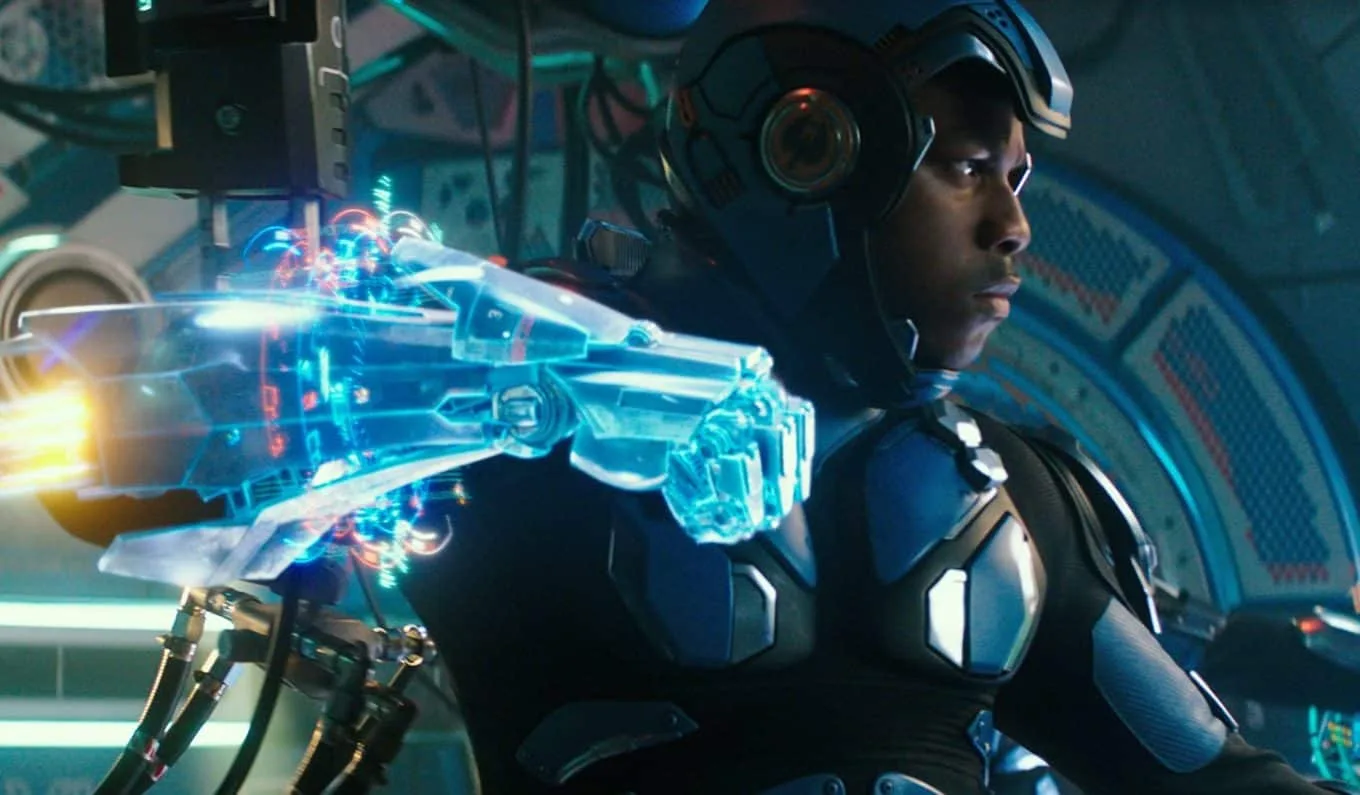
We pick up ten years after the events of the first film. Our original hero – Charlie Hunnam’s Raleigh Beckett – is nowhere to be seen. In his place, we have an all-new bad boy born to pilot a Jaeger, Jake Pentecost (John Boyega), son of Idris Elba’s martyred Stacker Pentecost, and adoptive brother of Rinko Kikuchi’s Mako – one of the few returnees from the original, along with Charlie Day and Burn Gorman’s scientists Newton and Herman. While the Kaiju war is to all intents and purposes history, the Jaegers still reign supreme, with a whole new crop of pilots being trained up to be the first line of defence should the Kaiju attack again. Having washed out years earlier, Jake reluctantly finds himself recruited back into the training programme along with young amateur Jaeger builder Amara (Cailee Spaeny).

Pacific Rim: Uprising is a rather different proposition from most modern megabudget follow-ups; the bulk of such films seem primarily concerned with repeating everything that worked about the last one, whilst bringing back as many characters and getting in as many fan-pleasing nods as possible. This is the key reason why the likes of Kingsman: The Golden Circle and the bulk of the Marvel sequels have tended to underwhelm. By contrast, Pacific Rim: Uprising seems to have been made primarily in the hopes of luring in viewers who didn’t see the first one, hence the casting of Star Wars actor Boyega in the lead, and the youth of most of his supporting cast. It also makes a point of addressing the key criticisms of the original. It’s a lighter affair in just about every sense, with a shorter running time, and a much brighter colour scheme; the original took place primarily at night, out at sea in the pouring rain, making the pivotal battle scenes difficult to follow. By contrast, Pacific Rim: Uprising is bathed in sunshine and big city lights, with new, more garish-looking and aerodynamic Jaegers, who spend a great deal more time in action this time around.
Alas, Uprising also deviates from its predecessor in ways which might be deemed to betray the spirit of what came before. For one, as might be apparent from the earlier synopsis, the Kaiju are largely absent until quite late in the day, and – without getting into spoilers – the means by which they return might not go down well with everyone. On a related note, the film’s treatment of the few returning original characters is also bound to be a bit of a sticking point. Not only is the absence of Hunnam’s Raleigh rather glaring (the actor was reportedly unable to return due to a scheduling clash, and DeKnight has admitted they’ve left his character’s fate vague in the hopes that they might bring him back in Part 3), but the choices made regarding those few survivors of the original are not entirely pleasing. Again, I’ll say no more to avoid spoilers, but I will say that while Uprising largely avoids being a bald-faced repeat of its predecessor, it does fall into a few all-too familiar sequel traps.

And hey – given that last year’s big screen Power Rangers was a bit of a let-down, Pacific Rim: Uprising feels in many respects like the best Power Rangers movie we’ve had yet.
Pacific Rim: Uprising is in cinemas now from Universal.
